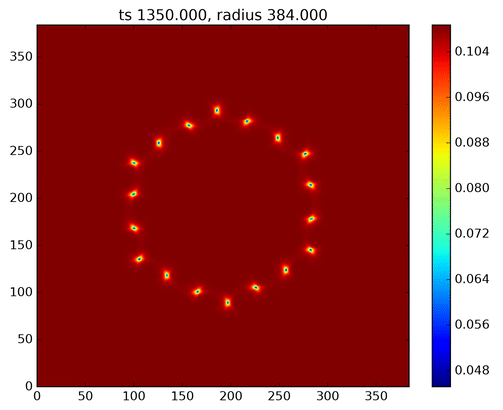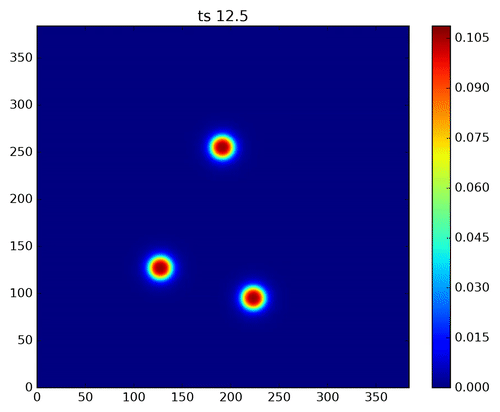The phase-field crystal (PFC) models liquid-solid phase transformations of crystals and can describe elasticity, plasticity and topological defects.
The program is a finite-difference based implementation of the PFC model. It also enables to perform elastic equilibration during the PFC time evolution. The L-BFGS algorithm is implemented to perform the elastic equilibration.
For more details, see the project report.
The following videos show time evolution of the PFC model for two systems. First is a circular grain in a monocrystal. The second system consists of three different orientation seeds in a supercooled liquid and results in a crystal consisting of three grains.
Python code is in the python_code directory. It requires a sub-directory named
"fig": create it before executing. Then, simply run
$ python main.pyThis will write an image, fig/phi.png, for your viewing pleasure.
You must compile the C++ code. To do so, run make from the top-level
directory. This will create the executable, src/pfc.
pfc requires a sub-directory named "output": create it before executing.
The default behavior is to write three files:
initial_conf.bin, representing the initial condition.eta50.bin, representing the system after 400 timesteps.eta100.bin, representing the system after 800 timesteps.
Each file contains the list of complex numbers, represented in 8-byte double-precision, and written out in octal form. The fastest moving index is y=[0,512], then x=[0,512], and finally c=[0,2]. To convert from octal to ASCII, use the octal dump utility:
$ od -v -t fD file.binPerhaps a more useful method is to use the misc/plot_binary_data.py script.
Supply a .bin data file, and it will convert it to a .png:
$ python misc/plot_binary_data.py output/initial_conf.bin
Creating output/initial_conf.png from output/initial_conf.binNote that if you change the grid size in the C++ source, you will have to change
the dimensions in plot_binary_data.py as well.

